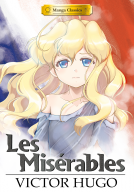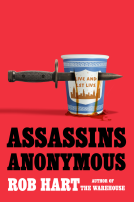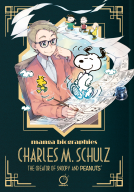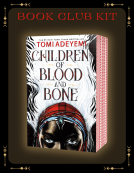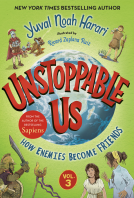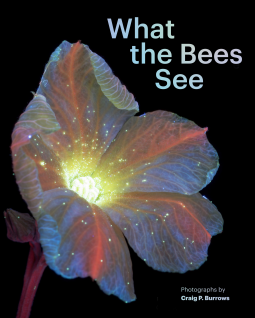
What the Bees See
A Honeybee's Eye View of the World
by Craig P. Burrows
This title was previously available on NetGalley and is now archived.
Send NetGalley books directly to your Kindle or Kindle app
1
To read on a Kindle or Kindle app, please add kindle@netgalley.com as an approved email address to receive files in your Amazon account. Click here for step-by-step instructions.
2
Also find your Kindle email address within your Amazon account, and enter it here.
Pub Date Mar 05 2024 | Archive Date Mar 04 2024
Talking about this book? Use #WhattheBeesSee #NetGalley. More hashtag tips!
Description
Discover the magical world of the honeybee with this deluxe book, featuring 70 stunning images shot with ultraviolet technology.
A comprehensive look into the amazing science of bees, this book collects mesmerizing ultraviolet-induced visible fluorescence (UVIVF) photography of flowers and nature and offers fascinating research that explores every aspect of our relationship with honeybees. Learn about the history of beekeeping, current environmental impacts affecting bees, and the rise of bee products in medical and wellness spaces. As you travel through the world of bees, you'll discover a diverse range of flora showcased in a whole new light through the ultraviolet spectrum, from orchids and anemones to manuka and cactus blossoms. A gorgeous gift for environmentalists and photography fans alike, this in-depth book invites us to reimagine the world from a bee's point of view and better understand its importance to the future of all life on earth.
PHENOMENAL NATURE IMAGERY: Craig P. Burrows has been specializing in UVIVF photography for nearly a decade, and this book includes 70 incredible photos taken using this innovative technique. Burrow's luminescent images capture the magic of nature and showcase flowers glowing in otherworldly blues and teals, simulating how bees and other pollinators become attracted to the plants.
GET THE BUZZ ABOUT BEES: In addition to the incredible UV photography, this book features engaging illustrations and infographics, archival and historical images, and original interviews with over forty of the world’s leading experts on bees and bee products. Organized into three distinct sections on bee ecosystems, bee products and cultivation, and modern medical and wellness advances tied to bees, this in-depth book illuminates the extraordinary role the honeybee has played throughout history and will answer questions you didn’t even know you had.
SUSTAINABILITY GIFT BOOK: This deluxe photobook is a great gift for nature lovers, bee and beekeeping enthusiasts, and anyone who cares about environmental conservation and preservation. Add it to the shelf with books like the National Geographic Photo Ark series by Joel Sartore and DK's The Bee Book.
Perfect for:
- Bee, insect, and bug enthusiasts
- Nature lovers and environmental activists
- Flower and nature photography lovers
- People interested in learning about bee products used in medicine, wellness, and skincare
- People interested in UVIVF technology and innovative photography techniques
- Fans of nature documentaries like David Attenborough’s Life In Color series
- Fans of Craig P. Burrows's research and photography
Available Editions
| EDITION | Other Format |
| ISBN | 9781797230184 |
| PRICE | $40.00 (USD) |
Available on NetGalley
Average rating from 27 members
Featured Reviews
This is an impressive work. The educational graphics are really effective and the photographs are absolutely stunning. The side-by-side comparisons of human vs. bee vision are mesmerizing. Not only is there information about "What the Bees See," this book also includes comprehensive information on types of bees, hive structure, bee and flower anatomy, how bees affect the food web, etc.--much more than just a book with pretty pictures.
I work for a library that hosts the bee as our logo, so we have a large collection of bee books--but, I have never seen a one like this! I am excited to share this one with our patrons.
Such a neat and fascinating book! I learned so much about the life of bees and loved all of the vibrant, gorgeous photos. This would make a fantastic gift for the science enthusiast.
Thank you NetGalley and the publisher for providing this ARC. All thoughts are my own.
 holly r, Librarian
holly r, Librarian
What a lovely book about how bees see the world! This book combines information about bees and flowers with outstanding photographs of how we believe bees see flowers. The extra information shares how important bees and pollinators are to our planet and our own future, and this book is a beautiful reminder that bees are special to us. This is a great addition to an adult library, and it would also make a great gift for anyone interested in photography.
Highly recommend!
I love both botany and entomology, so I immediately grabbed this book when I saw it was available. Not only are the photos descriptive and beautiful, but there is a lot of well-researched information to consume in this book. This is a book that would have fit perfectly in my college classes, which included classes that focused on the interactions between insects and plants, and how they communicate with one another.
I really appreciated the beginning explaining the different color spectrums humans and bees see, and the comparisons with photos of the same flower based on which spectrum is being seen - ours, or the bees. I also liked that this book goes both into vivid detail about all the topics covered, but also starts from the "beginning" as it were, and breaks down the building block information so any reader can understand the more complex information.
If you were interested in learning more about how bees interact with flowers, how bees live their lives, how honey is both created and it's benefits, and how humans interact and live with bees, then look no further. This is a great book to learn more information about these topics on, and it is written in an easy-to-understand format that doesn't talk down to you or oversimplify things - instead, it explains it to you using diagrams and photos.
I think this book would be perfect for anyone interested in the relationship between bees, flowers, and humans, and would be a great read regardless of the level of information you begin with. A more experienced reader would use the early explanations as a refresher before diving into the more complex topics, while someone with no knowledge would not be lost as they are given the same information in an easy-to-understand way.
Thank you to the author, Netgalley, and Chronicle Books for an arc of this book in exchange for an honest review.
What a special, stunning, visually appealing piece of art this book is! This was interesting to “see” the bees’ perspective. This would be a great gift for the bee keeper in your life or anyone for that matter.
 Reviewer 831746
Reviewer 831746
Have you ever wanted to read an entire textbook dedicated to bees? Just bees? Well, now you can. “What the bees see” by Craig P. Burrows is a roughly 200 page “textbook” about all things bees. The lovely photographs inside are edited to resemble something closer to what bees actually see, which I thought was very fun. That’s not all there is, though. This book goes over things that are including but not limited to: The anatomy of bees, the anatomy of flowers, hive society, climate change, pesticides, the history of bees, specifics about being a beekeeper, and health and wellness/ skincare in regard to honey and pollen. I cant say bees are my favorite thing, since I’ve been stung twice, but I found this enjoyable regardless. My review will be on Amazon and goodreads.
The ebook format doesn’t do justice to the breathtaking pictures in here.
Flowers like you’ve never seen.
Thanks to Chronicle Books and NetGalley, who provided me with a copy of this book in exchange for an honest opinion.
 Reviewer 1295824
Reviewer 1295824
I received an ARC from NetGalley.
I wanted to see this book because I was curious about the photography. The pictures were really pretty and interesting. I was expecting this to be more of an art/photography book with prose to tie the pictures together, but it wasn't quite that. The book delves into how bees function, their role in the environment, and about the benefits of honey, but a lot of the pictures were of random flowers that were separate and apart from that. So for anyone that wants to learn about bees and the impact their demise would have, this could be a good book to start with. Might be kinda preachy if you're already into environmental issues, but there's a lot of good basic information here.
 Brandi R, Reviewer
Brandi R, Reviewer
What the Bees See by Craig P. Burrows is an enlightening read. Admittedly, I knew little about bees when I picked up this book. I was drawn to the color, the light, and the flowers. Seeing flowers in a way that bees potentially see them was just awesome for me. The capture of fluorescence photography is stunning. Thankfully, I learned quite a bit in the process as well. I found the content well written and easy to follow along. I received a complimentary copy from the publisher via NetGalley and all opinions expressed are solely my own, freely given.
This book is essentially a text book about bees with some cool ultraviolet-induced visible fluorescence photos mixed in. I honestly didn't read all the text because a lot of it was more in-depth than I cared to get into, but someone who is more interested in bees would probably find it informative. I was captivated by the photos. They were not like anything I have seen before and they were truly beautiful.
I have never had even the slightest interest in bees, in fact I am terrified of them. However, the cover drew me in. It was so interesting to see what the world looks like through a bee’s eyes. All of the pictures were gorgeous! I also enjoyed learning so many new facts about bees that I have never heard before. For any other people who have a phobia of bees, give this book a try, it might just change your mind!
 Carol C, Reviewer
Carol C, Reviewer
What the Bees See is an amazing book filled with captivating photography and fascinating information. I learned so much reading this book and can’t wait for it to publish so I can purchase for a dear friend.
#WhattheBeesSee #NetGalley
 Reviewer 1206814
Reviewer 1206814
So bees are basically like ravers, where everything is covered, bathed in blue light? I absolutely loved the photographs, and found the educational aspect illuminating. Seeing things in such close-up gave me a sense of wonder, and made me curious about what I'd never seen before. Thanks for the ARC! Beautiful photos that I hope to return to, or perhaps give this book as a gift.
 Reviewer 1196166
Reviewer 1196166
Ultraviolet photography, crisp graphics, delectable information design - this book is stunning. What The Bees See is a visual feast. About half of its 200 pages are filled with full-page photos and visualizations of the things we know about bees.
I'll be upfront with you and tell you that I'm afraid of bees and picked this up because I wanted to see ultraviolet macro photography of flowers. This did not disappoint in that respect.
By nature of ultraviolet light, we can't see it, so the people taking UV photos have to make choices about how they'll color them when printing a book in the spectrum of colors that humans can actually see. The designers of this art book made a gorgeous conversion from bee-visible to human-visible colors.
I would love it if some art school libraries added this to their shelves to give artists some visual inspiration that is entangled with science. With the pages and pages of information about bees, it also wouldn't be out of place in the Nature section of a public library.
Thank you, Chronicle Books, Craig Burrows and the rest of the team behind this stunning creation for a free Netgalley advance reader copy in exchange for an honest review.
 Stephanie M, Librarian
Stephanie M, Librarian
This book is a symphony to the senses with full color UV images of flowers under the spectrum. The photos really bring to life what a bee sees. The scientific information contained in this book is amazing. I would recommend this book for those who respect and admire bees, to those who wish to simply view the stunning pictures. I found the discussion between the differences of honey, propolis, and royal jelly very interesting. The dietary components in each of these food materials/sources was very insightful and full of detailed information regarding the types of health benefits available from the world of bees. I also found it amazing that of 20,000 bee species in the world, that only 8 species actually produce honey! I will recommend this book to addition to our library collection. Great read!
 Kat R, Reviewer
Kat R, Reviewer
I am a good photographer … but I am not in this photographer’s league. Burrows uses UVIVF (Ultraviolet-Induced Visible Fluorescence) to capture photographs of flowers the way that bees might see them. In the book, Burrows and his scientific compatriots are quick to recognize that humans can’t possibly see the world the way bees do because of the bees’ compound eyes. But with Burrows’ amazing pictures, we can imagine it based on the bees’ superior visibility of flowers in the ultraviolet range.
With scientific diagrams and descriptions worthy of my favorite high school teacher, this book makes the “visible” spectrum easy to understand. I use quotes because, as stated, bees have a different visible spectrum than humans.
The beauty of the photography highlights the importance of bees in our garden environment. And I, for one, am here for it.
Why I Chose This Book
First of all, look at that cover photo! Yes, I was expecting something like a coffee table book. Let me tell you I was not disappointed!
First and foremost this book is GOREGOUS! The photography is stunning, taking you on a journey between the world we see and the beautiful world that bees see. Not only is it jammed pack with amazing photos, but it also houses a plethora of information about our favorite pollinators. Myself and my children ohhh and awhhed as we turn the pages, pointing out our favorite photos paired with our favorite bee facts. I found the balance of information and photography mixed well making this beauty a perfect "coffee table" centerpiece.
This wonderful book is full of interesting details including descriptions of various types of bees, stages of life, environmental and disease threats, pollen and nectar gathering, and hive organization. One graph compares the lifespan of a human if she were a queen honeybee. Let’s just say it’s a long, long time!
First, why do we care about bees? Because our survival is in their hands. Eighty percent of the world’s food comes from flowering plants that need a pollinator to reproduce, and the keystone species honeybee plays an outsized role. What would life be without coffee and chocolate!
Any important job will have specialized tools, and to accomplish the amazing task on behalf of ecology, the food chain, and our survival, a bee must be able to locate pollen and nectar. To do so, her most important tool is her eyes. I say her, because it is the female honeybee who forages for pollen and nectar. The bee will use various visual cues such as landmarks, vertical features (roads, drainage ditches), and polarized light e-vectors when foraging. She will pass along this gps information via a dance when she returns to the hive.
Like most animals, honeybees see ultraviolet light, but they see it faster than other creatures. UV light plays a critical role in finding pollen but also penetrates cloud cover, widening the foraging window. Color patterns in flowers are nectar guides and iridescent, not all of which are visible to the human eye. For honeybees, these vectors are pay dirt.
The book is well designed, and the information alone is worth a read. But the most spectacular feature of this book is the photography. The flower images are produced using ultraviolet-induced visible fluorescence photography to mimic how a bee sees, and they are breathtaking.
Many thanks to Chronicle Books and NetGalley for providing this eARC.
 Lisa D, Reviewer
Lisa D, Reviewer
This is one of the most beautiful books I've ever seen. Yes, you can get this as a coffee book and give it as a gift to impress your friends, and that is enough. But there is so much more here!
The pictures have an unusual look and the author explains the science behind how they are different. They have such an unusual, haunting, luminescent look. Even the bees are gorgeous.
But there is also a lot of information about bees and their habitats. Youcan learn about why bees are vital in different areas of the world, and there is even fascinating information about why food is important as food and medicine. I had no idea honey could help with cancer and dry eye.
Thanks so much to NetGalley for letting me read this gorgeous ARC
I appreciated exploring the beauty of plants in this book, and how the author passionately explains the relationship between plants and pollinators. The author adds that other species such as birds, bats and butterflies also fall under the pollinator category. The flower lures in its partner with its beautiful shapes, colors and smells. The pollinator partner helps to spread the seeds over the land.
The photography is beautiful, and the information provided here is intelligent and skillfully written. Thank you to NetGalley and Chronicle Books for providing this title in exchange for an honest review.
5 stars.
An informative book with stunning imagery, "What the Bees See" is an inspiring resource for nature lovers. The UVIVF photos featured in this book are not an exact representation of how bees see the world, but rather an imaginative tool to help us understand bee/insect’s perspective. It's important to read the text carefully to avoid any misunderstandings based on the book's title.
Personally, this book has inspired me to learn more about bees and nature. The author's work is truly admirable.
This book contains 70 beautiful ultraviolet photos but not as many as I had expected; I would have loved to see many more photos for a 200 page book. I was looking forward to the writing but it was a bit dense like a textbook, I expected it to be lighter. However the information the book contains is good—and there’s a lot of it.
In this gorgeous 195-page book, botanical photographer Craig P. Burrows offers 70 stunning ultraviolet-induced visible fluorescence (UVIVF) photographs of flowers to simulate what bees and other pollinators might see. The book also includes close-up photographs of bees, as well as charts and other informative illustrations. Between the images, you’ll find short essays and interviews about bees and the products they produce.
I found the text interesting, but it’s the photographs that really set this book apart. My only frustration is that many of the photographs lacked captions. You’ll have to refer to the Index of Plant Species in the back to find out what some of the photo subjects are. Other back matter includes a List of Contributors, References, and Acknowledgements.
This book would make a wonderful gift for a nature lover or be an interesting addition to your coffee table. The photographs inspire wonder.
Thanks to Chronicle Books for providing me with an electronic ARC through NetGalley. I volunteered to provide an honest review.
 Kelliann n, Reviewer
Kelliann n, Reviewer
Wow. The imagines are captivating. This book is one of those ones you set out on your coffee table and flip through for pure enjoyment.
Very well done. The research and text was informative and beyond interesting.
I highly recomend this book to all audiences.
Readers who liked this book also liked:
L.M Montgomery
Children's Fiction, Comics, Graphic Novels, Manga, Teens & YA
Yuzuru Kuki
Biographies & Memoirs, Children's Nonfiction, Comics, Graphic Novels, Manga
Judith Orloff; Jennifer Adams
Children's Fiction, Middle Grade, Parenting, Families, Relationships
We Are Bookish
Sci Fi & Fantasy, Teens & YA
Nolo Hopkinson; P. Djèlí Clark; Tobias S. Buckell; T.L. Huchu; Tananarive Due; Xan van Rooyen; Gabrielle Emem Harry; Chisom Umeh; Makena Onjerika; Wole Talabi
Multicultural Interest, Sci Fi & Fantasy

